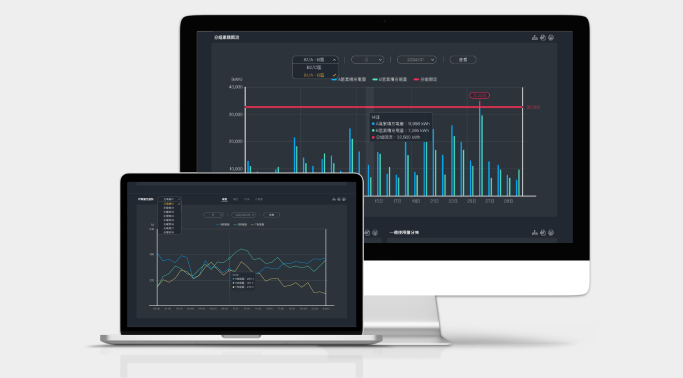Solar Power and Energy Storage System
PV-Charging-Storage Solution
Taiwan’s energy transition policy is focused on increasing natural gas, reducing coal, expanding renewables, and moving toward non-nuclear clean energy. Renewable energy development is undoubtedly a major driving force under the nation’s net-zero carbon goals.
The IWA Solar Energy Storage and Management System effectively monitors energy charging and discharging status. Acting as an intermediary for both energy generation and conservation, the storage system plays a vital role in enhancing the flexibility and resilience of Taiwan’s power infrastructure.
The IWA Solar Energy Storage and Management System effectively monitors energy charging and discharging status. Acting as an intermediary for both energy generation and conservation, the storage system plays a vital role in enhancing the flexibility and resilience of Taiwan’s power infrastructure.


System Features
Energy Storage
Powered by solar energy and connected in parallel with the grid, the system also includes a built-in battery for electricity storage.
Smart Green Energy/Stored Energy Resources
A carbon management system enables real-time tracking of green energy and emissions, with support for grid feed-in.
Stable Power Supply
During the day, solar energy is harvested and stored, while at night—especially during peak demand hours—electricity is supplied through the energy storage system.
Peak Shaving and Valley Filling
The energy management system controls charging and discharging to shave peaks, fill valleys, and reduce energy costs.
Pain Points and Benefits
Large-Scale Manufacturing Facilities
Avoid contract demand penalties and address power restriction challenges.
Energy Storage System (ESS)
Self-Generated Solar Power
- Establish clear dual-carbon goals, including reducing carbon emissions and improving energy efficiency.
- Implement time-of-use electricity pricing, encouraging energy consumption during off-peak, lower-cost periods.
- Maximize energy production and storage during off-peak hours through energy storage systems and self-generated solar power, in order to reduce operational costs.
Transition to a Green Supply Chain
Ensure Stable Power Supply
Energy Storage System
Energy Management
- Install battery energy storage systems to store excess solar energy for use during peak demand periods.
- Utilize an energy management system to monitor and dispatch solar power in real time, reducing energy waste.
- Develop an energy reserve plan to anticipate solar generation fluctuations and incorporate storage or other balancing resources.
EV Charging Stations
The parking lot location has insufficient feeder line capacity to support the installation of charging stations.
Energy Storage System (ESS)
Energy Management
EV Charging Management
- The parking lot location has insufficient feeder line capacity to support the installation of EV charging stations.
- Energy is dispatched from the storage system to supply electric vehicles on demand.
Carbon andEnergy
Visualization
Visualization
AI manages carbon and energy by collecting data, predicting usage, and balancing green supply and demand.
Site Energy Saving
and Smart Control
and Smart Control
During outages, the solar-storage system can operate independently and connect to the grid when needed. It optimizes stored renewable energy for both sustainability and backup support, addressing intermittency issues.
Sustainable Facility
and Asset Operation
and Asset Operation
AI security monitoring automates safety management for solar and energy storage sites.
IWA Operations Command Center and Integrated System Management Platform
The IWA Operations Command Center integrates a system management platform featuring automated carbon emission tracking and energy management functions. The center collects data from various devices, consolidates critical information, and enables comprehensive management through intelligent analysis.
